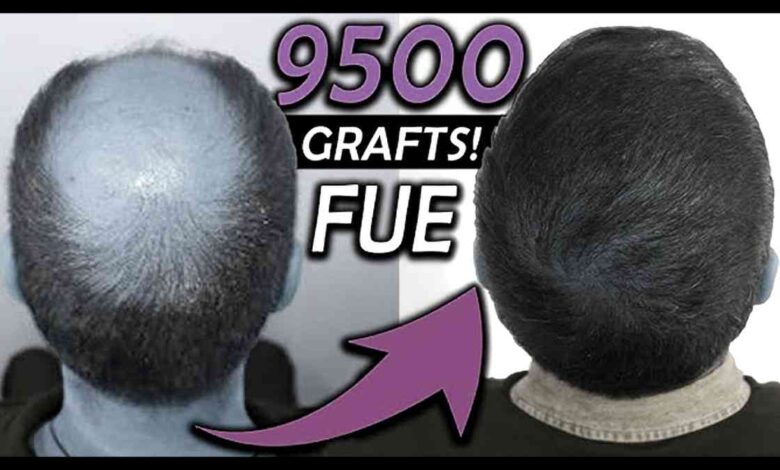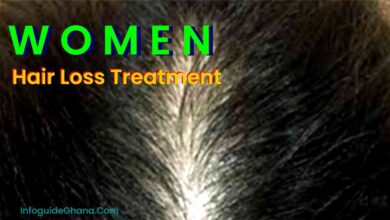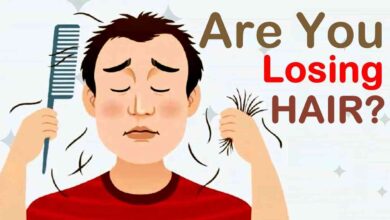Medical Hair Restoration – A Cure for Hair Loss

Medical hair restoration in the literal sense includes hair loss treatment which depends on the use of medicines. Unusual hair loss both in men and women is caused by alterations in androgen metabolism. Androgen is a male hormone that has a major role to play in the regulation of hair growth, or hair loss. The dermal papilla is the most important structure in a hair follicle and is responsible for hair growth.
It is the dermal papilla, the cell that divides and differentiates to give rise to a new hair follicle. The dermal papilla is in direct contact with blood capillaries in the skin to derive the nutrients for the growing hair follicle.
Medical Hair Restoration Research & Studies
Research has shown that the dermal papilla has many receptors for androgens and some studies have confirmed that males have more androgenic receptors in the dermal papilla of their follicles as compared to females.
READ ALSO: The Truth About Hair Loss in Women.
The metabolism of androgen involves an enzyme called 5 alpha-reductase which combines with the hormone androgen(testosterone) to form the DHT (Dihydro-testosterone). DHT is a natural metabolite of our body that is the root cause of hair loss.
Proper nutrition is critical for the maintenance of the hair. When DHT gets into the hair follicles and roots (dermal papilla), it prevents necessary proteins, vitamins, and minerals from providing the nourishment needed to sustain life in the hairs of those follicles.
Consequently, hair follicles are reproduced at a much slower rate. This shortens their growing stage (anagen phase) and lengthens the resting stage (telogen phase) of the follicle. DHT also causes hair follicles to shrink and get progressively smaller and finer. This process is known as miniaturization and causes the hair to ultimately fall. DHT is responsible for 95% of hair loss.
Some individuals both men and women are genetically pre-disposed to produce more DHT than normal individuals. DHT also creates a wax-like substance around the hair roots. It is this accumulation of DHT inside the hair follicles and roots that is one of the primary causes of male and female pattern hair loss.
READ ALSO: Best Hair Loss Cure For Men You Should Know.
Blocking the synthesis of DHT at the molecular level forms the basis for the treatment of MPHL ( male pattern hair loss) and FPHL ( female pattern hair loss). There are many natural DHT blockers and several drugs which are used for medical hair restoration.
Drugs Available for Medicinal Hair Restoration
Let us see the main drugs that are available for medical hair restoration in men and women.
Minoxidil
Minoxidil has the distinction of being the first drug being used for promoting hair restoration. This medical hair restoration treatment drug was used earlier as an oral antihypertensive drug, but after its hypertrichosis (excessive body hair) effects were noticed, a topical solution of the drug was tested for its hair growth potential.
Minoxidil was then approved as a medical hair restoration treatment drug for men by the US Food and Drug Administration (FDA) in 1988 as a 2% solution, followed by a 5% solution in 1997. For women, the 2% solution was approved in 1991. Though the 5% solution is not approved for women, it is used as a medical hair restoration treatment by many dermatologists worldwide. Both solutions are available without a prescription in the US.
SEE ALSO: Hair Loss – Tips for Successful Hair Growth.
Mechanism of action
Minoxidil is thought to have a direct mitogenic effect on epidermal cells, as has been observed both in vitro and in vivo. Though the mechanism of its action for causing cell proliferation is not very clear, minoxidil is thought to prevent intracellular calcium entry. Calcium normally enhances epidermal growth factors to inhibit hair growth, and Minoxidil by getting converted to minoxidil sulfate acts as a potassium channel agonist and enhances potassium ion permeability to prevent calcium ions from entering cells.
Though the exact action of minoxidil preventing the formation of DHT has not been shown the drug has been shown to have a stabilizing effect on hair loss. The result of the drug takes about a few months to be evident since it is the time that is necessary for restoring the normal growth cycle of hair fibers.
The use of Minoxidil has been approved by the FDA for men (Norwood II-V) and women (Ludwig I-II ) older than 18 years. It is used as a medical hair restoration treatment either for frontal or vertex scalp thinning.
It brings about an increase in density which is mostly caused by the conversion of miniaturized hairs into terminal hairs rather than a stimulated de novo re-growth. The hair loss becomes stabilized after continued use of the drug, it takes about a year for the medical hair restoration treatment to show its complete results.
ALSO READ: Can Too Little Protein Cause Hair Loss?
Hair loss restoration treatment with 0.05% betamethasone dipropionate and 5% topical minoxidil is found to be superior to minoxidil alone. Topical minoxidil is very well tolerated and adverse effects are mainly dermatologic. The most frequent adverse effect is irritant contact dermatitis.
Though minoxidil does not have any effect on blood pressure, it should be used with caution in patients with cardiovascular diseases. It is also contraindicated in pregnant and nursing mothers.
Finasteride
The drug finasteride was earlier used as a treatment for prostate enlargement, under the medical name Proscar. But in 1998, it was approved by FDA for the Medical hair loss restoration in MPHL.
Mechanism of Action
Medical hair restoration treatments with Finasteride depend upon its specific action as an inhibitor of type II 5α-reductase, the intracellular enzyme that converts male hormone androgen into DHT (Dihydro Testosterone). Its action results in a significant decrease in serum and tissue DHT levels even in concentrations as low as 0.2mg. Finasteride can stabilize hair loss in 80% of patients with Vertex hair loss and 70% of patients with frontal hair loss.
SEE ALSO: Cause of Trichotillomania: All That You Should Know.
Most of these patients can grow more hair or retain the ones they have. The peculiar thing about Propecia is that its effect is more pronounced in the crown area than in the front. The hair that grows after the medical hair restoration treatments is better in texture and is thicker, more like terminal hair.
The best thing about medical hair restoration treatment with finasteride is that it is well-tolerated and has minimal side effects. Sexual dysfunction (decreased sex drive, erectile dysfunction, and decreased semen volume) is observed in about 3.8% of cases. But these side effects subside within a few months of Medical hair restoration treatments or disappear within a week as soon as the treatment is stopped.
It generally requires about 6 to 12 months for the medical hair restoration treatment to be apparent but the side effects appear earlier. So even after the medicine is stopped, there is no possibility of losing the hair that has been gained, but the side effects are sure to disappear.
Many hair restoration surgeons find Propecia (finasteride) to act as an excellent adjunct to surgical hair restoration. There are several benefits of this kind of combination therapy.
As the Medical hair restoration with Propecia brings about a hair re-growth in the crown area, it has a complementary action; it allows the surgeon to have more donor hair available for frontal hair transplant and design the hairline at his own will.
READ ALSO: How to Stop Hair Loss and Regrow Hair Fast.
Since finasteride does not affect the frontal area of the scalp, it does not have any interference with surgical hair restoration.
Combination Therapy
There are reports which say that the use of finasteride and topical minoxidil combination therapy as a Medical hair restoration treatment is more advantageous in cases of mild to moderate MPHL. Further studies are in progress. Many hair restoration doctors have already started the use of combination therapy to obtain better hair growth.
Anti Androgen Therapy
For women with hyperandrogenism( with increased levels of androgen) who do not respond well to minoxidil, antiandrogen therapy is another option for medical hair restoration. In the UK the most commonly used anti-androgen for women is CPA (cyproterone acetate), which is used in combination with ethinylestradiol.
However, in the United States, where CPA is not available, the aldosterone antagonist spironolactone is the choice of hair restoration doctors.
Flutamide
Medical hair restoration with flutamide has shown improvement as a hair loss restoration treatment in women with hirsutism. For hyperandrogenic premenopausal women, flutamide is a better medical hair restoration agent than both CPA and finasteride.
Hair loss restoration management is a structured process that depends upon many factors along with medical hair restoration.
Was this information useful to you? Share with others on social media and other platforms. Subscribe to our notifications for the latest updates!
Source: InfoguideGhana | Medical Hair Restoration







